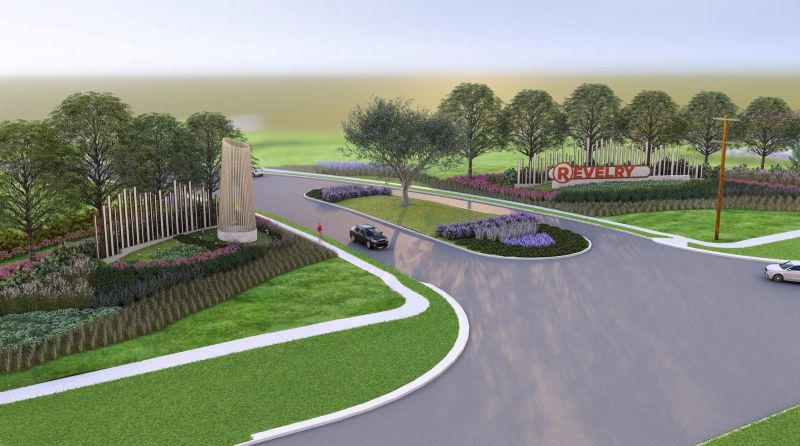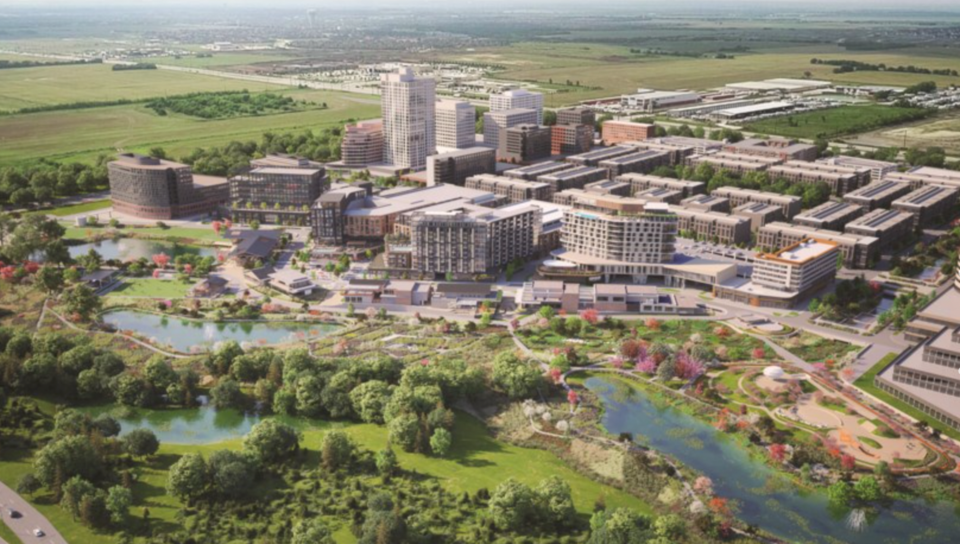Plano’s Planning and Zoning Commission recommended approval on November 17 for a 215-acre Lavon Farms development that would transform Plano’s Historic Lavon Farms into 626 single-family homes, 1,052 multifamily units, and 37 acres of open space. The project now awaits Plano City Council’s final decision at its December 8 meeting.
The Moore family has operated Lavon Farms as a dairy since acquiring the property in 1936 making it one of the last working agricultural operations within Plano’s city limits. Todd Moore says the development has been “about 25 years” in the making, reflecting the lengthy negotiations required to balance preservation with growth in a city where developable land has become scarce.
Three-Subdistrict Plan Balances Density with Heritage
High Street Residential, the residential subsidiary of Trammell Crow Company, is the developer overseeing the Lavon Farms project. The development splits into three distinct subdistricts designed to serve different housing markets while maintaining connectivity to existing infrastructure.
The three subdistricts create distinct residential environments within a unified development:

Lavon Farms Development Breakdown by Subdistrict
| Feature | Subdistrict A (West) | Subdistrict B (Northeast) | Subdistrict C (Southeast) |
|---|---|---|---|
| Primary Use | Single-Family Residential | Multifamily Residential | Rural Preserve + Micro Farm |
| Housing Units | • Up to 298 detached homes/duplexes • Up to 66 stacked townhomes | 1,052 multifamily units | Minimal/supporting residential |
| Building Types | 1-2 story detached and attached | 2-4 story apartment buildings | Historic farmstead structures |
| Density Profile | Low to medium | High | Very low (open space focused) |
| Target Market | Traditional homebuyers, families | Workforce housing, young professionals | Community amenity space |
| Key Features | Park spaces, traditional lots | Parks, proximity to Event Center | • Farmer’s markets • Food trucks • Garden center • Retail • Preserved silo, windmill, stone features |
| Character | Suburban residential neighborhood | Urban-style apartment living | Agrarian heritage preservation |
Total Development: 1,678 residential units across 215 acres + 37 acres open space
Subdistrict A targets traditional buyers seeking yard space and proximity to schools, positioning Lavon Farms as a transitional neighborhood between east Plano’s established residential areas and newer mixed-use corridors.
Subdistrict B, located in the northeast section just south of the Plano Event Center, would feature 1,052 multifamily units through 2-, 3-, and 4-story apartment buildings. This higher-density component answers Plano’s need for workforce housing while capitalizing on the Event Center’s drawing power and Collin College’s nearby Spring Creek Campus.
The southeast corner, designated as Subsection C, contains the project’s most distinctive element. The “Rural Preserve” section will function as a micro farm and ranch, with the potential to include farmer’s markets, food trucks, a garden center, and retail operations meant to maintain Lavon Farm’s “agrarian character,” according to Plano Assistant Director of Planning Michael Bell.
Preservation Requirements Written Into Zoning
At least half of the original farmstead structures in subdistrict C are required to be preserved, including stone entrance features, the silo, and windmill. These architectural mandates distinguish Lavon Farms from standard suburban subdivisions and create a branded identity around agricultural heritage.
The Rural Preserve strategy serves multiple functions: it honors the Moore family’s legacy, provides distinctive amenities for residents, and creates a marketing differentiator in a crowded residential market. Developers increasingly recognize that preserved historical elements add value by establishing sense of place—a commodity in short supply across North Texas suburban development.
Four-lane roadways connecting K Avenue, Jupiter Road, and Spring Creek Parkway with a roundabout will also be constructed as part of the development, addressing connectivity concerns that have historically limited east Plano’s development appeal.
Why State Legislation Shaped the Commission’s Calculus
The city received 76 responses to the zoning case from Plano residents, with 66 writing in opposition to the project, eight writing in support, and two neutral, according to city documents. Opposition centered primarily on housing density and the multifamily component—predictable concerns whenever apartments enter traditionally single-family areas.
But multiple commissioners noted impacts that recently approved state laws including Senate Bills 15, 840, and 2477 could have on the area if the project does not move forward. The legislation limits city officials’ jurisdiction over proposed residential development.
This reflects a strategic shift in how Texas municipalities approach development decisions. When state law constrains local zoning authority, negotiated projects with community benefits become preferable to fighting battles cities may lose anyway.
“One of my fears was that we had lost the ability to shape our city,” commissioner Tosan Olley said. “The fact that the property owner has found partners who will help us shape our city I think is something that should not be discounted”.
Translation: Commissioners viewed this as a controlled development scenario with preservation commitments, parks, and infrastructure improvements versus facing potential state-mandated housing development with fewer local controls.
Oak Point Area’s Long-Awaited Catalyst
Lavon Farms is a “key catalyst site” for the Envision Oak Point Plan, which was initially adopted in 2018. The plan’s goal: unify northeast Plano by leveraging existing assets including Oak Point Park, the Plano Event Center, Plano Market Square Mall, Collin College’s Spring Creek Campus, and the Oak Point Recreation Center.
Trammell Crow Principal Kevin Hickman confirmed that developers “really used the vision from Envision Oak Point to shape and form our plans”, indicating alignment between municipal vision and private development execution—an alignment that doesn’t always materialize in master-planned community development.
The area has struggled to attract commercial development despite significant public amenities. Residential density creates the population base needed to support retail, restaurants, and services that would make east Plano self-sustaining rather than dependent on westside commercial corridors.
Timeline and Market Implications
If approved by City Council on December 8, Hickman said they would expect to break ground on the first phase of the project before the end of 2026. Moore added that he expects the entire project to take seven years.
That seven-year buildout timeline spreads absorption risk while allowing developers to respond to market conditions. It also means Lavon Farms won’t flood the market with inventory critical for maintaining pricing stability in east Plano’s residential market.
For land investors and developers watching Plano’s remaining developable parcels, Lavon Farms represents a model for negotiating heritage preservation into development agreements. It demonstrates that family-owned agricultural land can transition without complete erasure of its historical character.
The development also signals growing confidence in east Plano’s trajectory. When institutional developers like Trammell Crow commit to multi-year projects in historically slower-growth areas, it reflects data-driven conviction about infrastructure, demographics, and demand drivers that may not yet be visible in current sales comps.
Request an East Plano Development Brief to track projects leveraging the Oak Point area’s public amenities and understand residential absorption trends in Collin County’s emerging corridors.
Plano is not the only one that has had majot development news. Prosper tables the Bella Project




